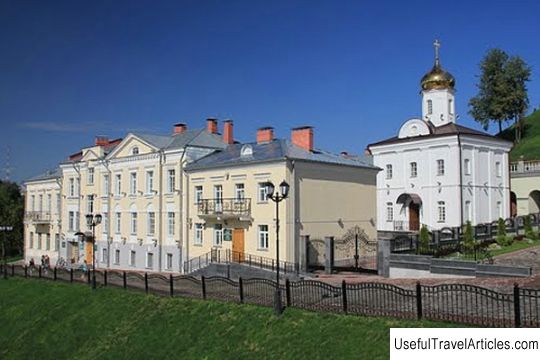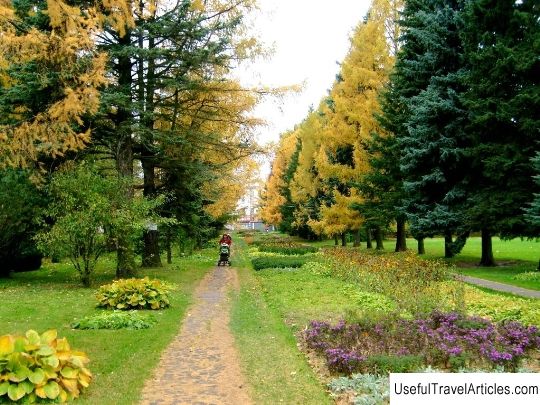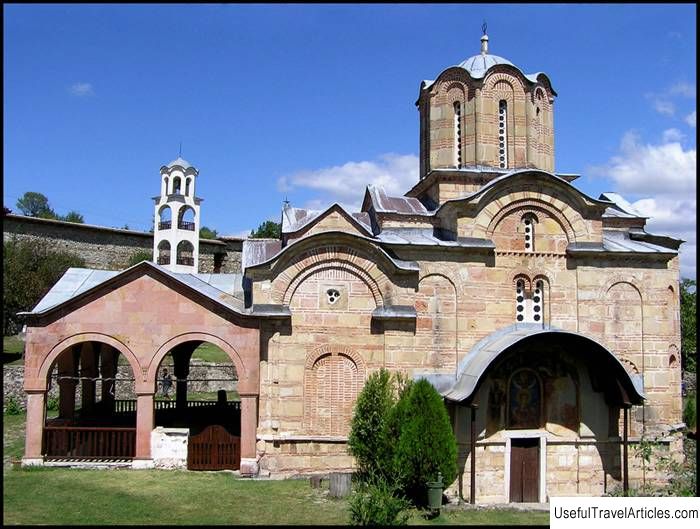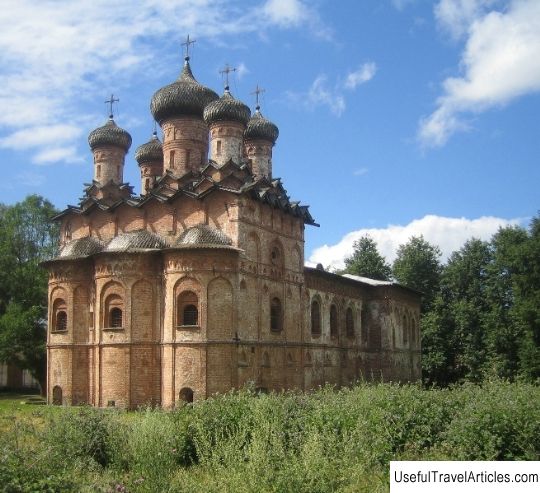Trinity Markov Monastery description and photos - Belarus: Vitebsk
Rating: 8,3/10 (5094 votes) 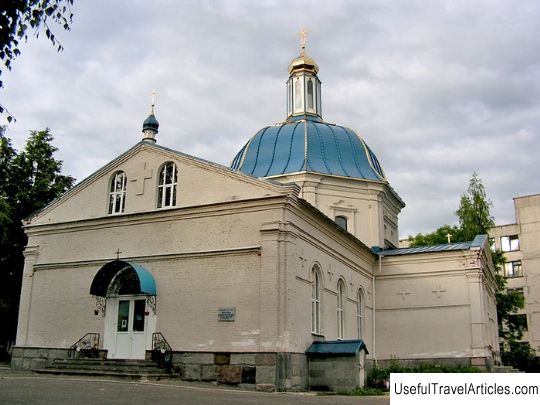
Trinity Markov Monastery description and photos - Belarus: Vitebsk. Detailed information about the attraction. Description, photos and a map showing the nearest significant objects. Photo and descriptionThe Holy Trinity Markov Monastery is the only active male monastery in Vitebsk at the moment. According to legend, it was founded at the turn of the XIV-XV centuries by Mark Zemyanin. This man built a chapel on the land that belonged to him and chose it as his place of residence. Very soon, either because of the beauty of the chapel, or because of the righteousness of Mark Zemianin, fellow believers began to join him. So the skete was spontaneously formed. Over time, the skete grew into a real monastery, which, out of respect for its founder, began to be called the Markov Monastery. In 1576, the monastery was abolished. In 1633 the monastery was restored by Prince Lev Oginsky and his wife Sophia. He built a wooden Holy Trinity Church and cells for monks. In 1654, the alliance of Russian troops and Ukrainian Cossacks conquered Belarusian cities, including Vitebsk. The monks of the Markov Monastery did not stand aside and fought on the side of the Orthodox army, for which Tsar Alexei Mikhailovich and Patriarch Nikon presented the icon of the Kazan Mother of God to the monastery. This miraculous image has been kept by the Markov Monastery ever since. There are many testimonies of miracles that were performed after the faithful prayers in front of this icon - this is healing from diseases, and deliverance from adversity, and the gift of children. In 1667 Vitebsk became part of the Commonwealth. Apparently, the support of the monks of the Markov Monastery of Orthodox fellow believers in the war was not forgotten. In 1680, a fire broke out in the monastery, which destroyed all the wooden buildings of the monastery. In 1691 a new church was built, which was consecrated in honor of the Holy Trinity. The monastery was restored, grew and prospered, which the Uniates could not fail to notice. In 1751, the Uniates, led by the dean Kazimir, attacked the Markov Monastery. The monks were driven out, the abbot was captured. This incident caused a wide public outcry. Casimir realized that he would not be able to stay in the monastery, took all the most valuable and left the monastery. It became obvious that the monastery should have defensive structures. Therefore, a stone Church of the Intercession and a three-tiered bell tower were built, as well as stone monastic cells and outbuildings. Fortunately for the monks, Vitebsk was soon annexed to the Russian Empire, and Empress Catherine patronized the Orthodox in the newly acquired lands. The prosperous Markov Monastery was plundered in 1812 by Napoleon's army, but rebuilt again after the victory of the Russian army. The monastery flourished and lived serenely until the October Revolution, when in 1919 a concentration camp was organized within the holy walls. During the Nazi occupation, the Intercession Church was opened and re-consecrated into the Kazan Church, in honor of the miraculous Kazan icon stored in the temple. Unfortunately, only the Kazan Church has survived to this day, which was not closed and was the only active Orthodox church in Vitebsk. The rest of the monastery buildings were either demolished or transferred to a silk mill during the Soviet era. In 2000, the male Markov monastery was restored.      We also recommend reading Children's Museum description and photos - Belarus: Polotsk Topic: Trinity Markov Monastery description and photos - Belarus: Vitebsk. |
